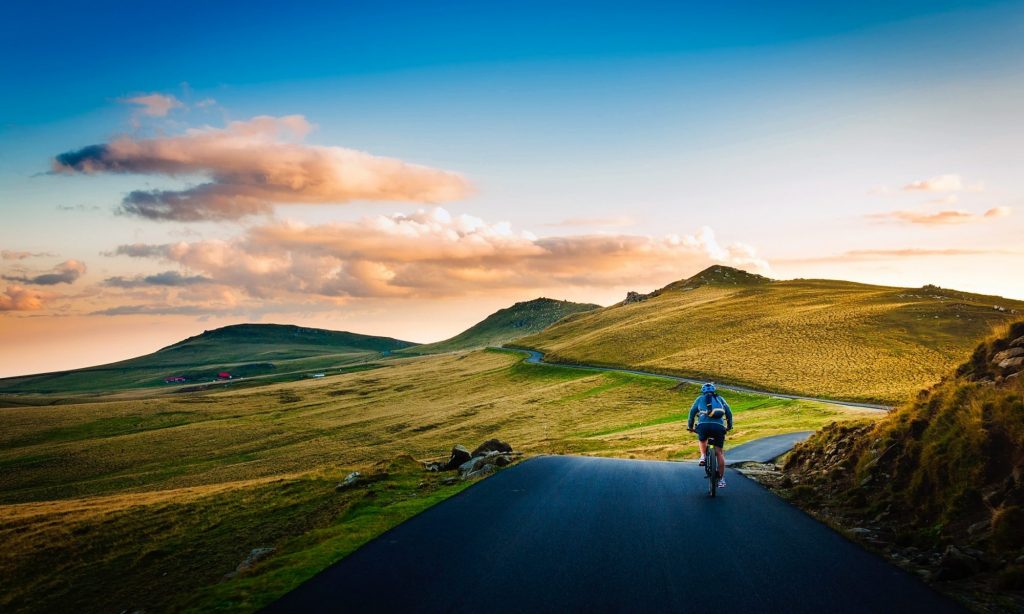
For many people, the Balkan Peninsula is one of Europe’s final unexplored regions.
Here, there is an abundance of cultural and natural diversity that has been shaped over the ages by many political upheavals and imperial influences from the Byzantine to the Ottoman.
We put traditional towns, villages, UNESCO World Heritage Sites, and unspoiled natural areas up against Tirana, Skopje, Prishtina, and Podgorica.
Each nation has a unique culture, cuisine, and heritage to experience as it develops into an independent country and finds its position in the modern world.
This is a unique opportunity to see the resurgence of locations that were kept off-limits until recently.
New and old nearly seamlessly blend together when East and West collide.
People have traveled here for millennia because of its
Arrival
DAY 1
Meet at the airport in Tirana, then be transferred to your accommodation in the heart of the city.
Over a leisurely meal, get to know the other tour participants.
Depending on the arrival planes, we may have the opportunity to see Tirana after check-in, stopping at the Enver Hoxha nuclear bunker, the fruit and vegetable market, and the national museum of history near to the recently constructed Tirana city center.
Your tour guide will accompany you as you go through all the tour specifics before to the welcome meal and fill you in on all the information you require regarding the amazing tour you are about to embark on.
Albania’s vibrant, lively capital city of Tirana is where this little country’s ambitions and dreams are embodied.

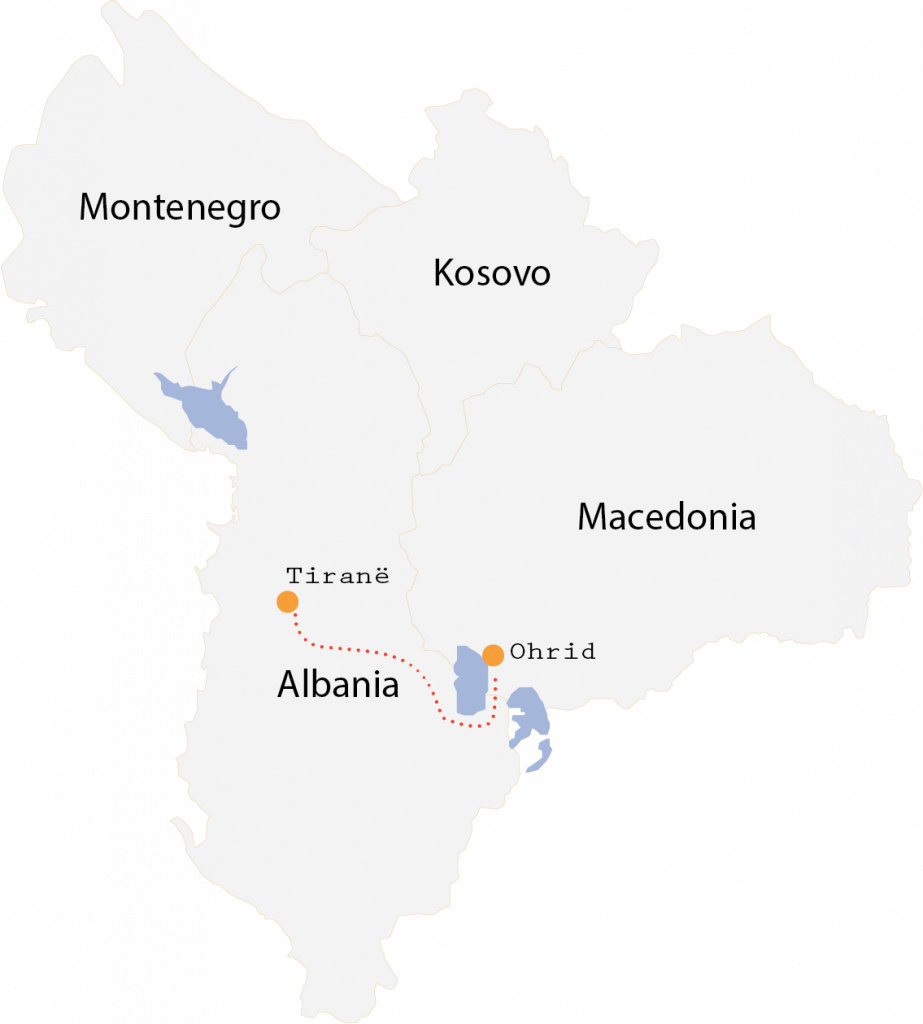
Tiranë-Ohrid
DAY 2
We will start the morning with a two hour transfer to the northern side of Lake Ohrid. From where, after we have unloaded the bicycles and fitted them to everyones comfort we will start cycling along the scenic shore of lake Ohrid towards Pogradec. After lunch we will cross over into Macedonia, and visiting the monastery of St Naum before arriving in Ohrid.
Sublime Ohrid with it’s 365 churches, is Macedonia’s most seductive destination, with an atmospheric old quarter cascading down a graceful hill, crammed full of beautiful churches and topped by the bones of a medieval castle. Its cobbled streets are flanked by traditional restaurants and lakeside cafes, but it’s not a complete tourist circus just yet and still has a lived-in feel. Lake Ohrid, one of the oldest lakes in the world, came into existence during a remote geological ages as a result of tectonic shifts and with its unique flora and fauna the lake is one of the largest biological reserves in Europe and with 212 known endemic species and a surface area of 358 km2 it is probably the most diverse lake in the world.
Ohrid-Debar
DAY 3
Today we cycle along the Black Drin Valley following the only way out for the river, from Lake Ohrid down the gorge past several dams and lakes to Debar.
Across the city of Debar passed the main road Via Egnatia. At that time the city included all the provinces on both sides of the middle course of Black Drin – from Struga to Prizren, from Tirana to Kicevo and from Elbasan to Gostivar. All that attached great importance to the economic centers on the western side of the Balkan Peninsula. Throughout the city, there were long columns of caravans in different directions, to Albania, Thessaloniki and Skopje.
Debar has several thermal water springs with temperatures reaching 48°C and is characterized as sulfur-sulphide with a high degree of radioactivity and the presence of algae suitable for treatment and for scientific purposes.

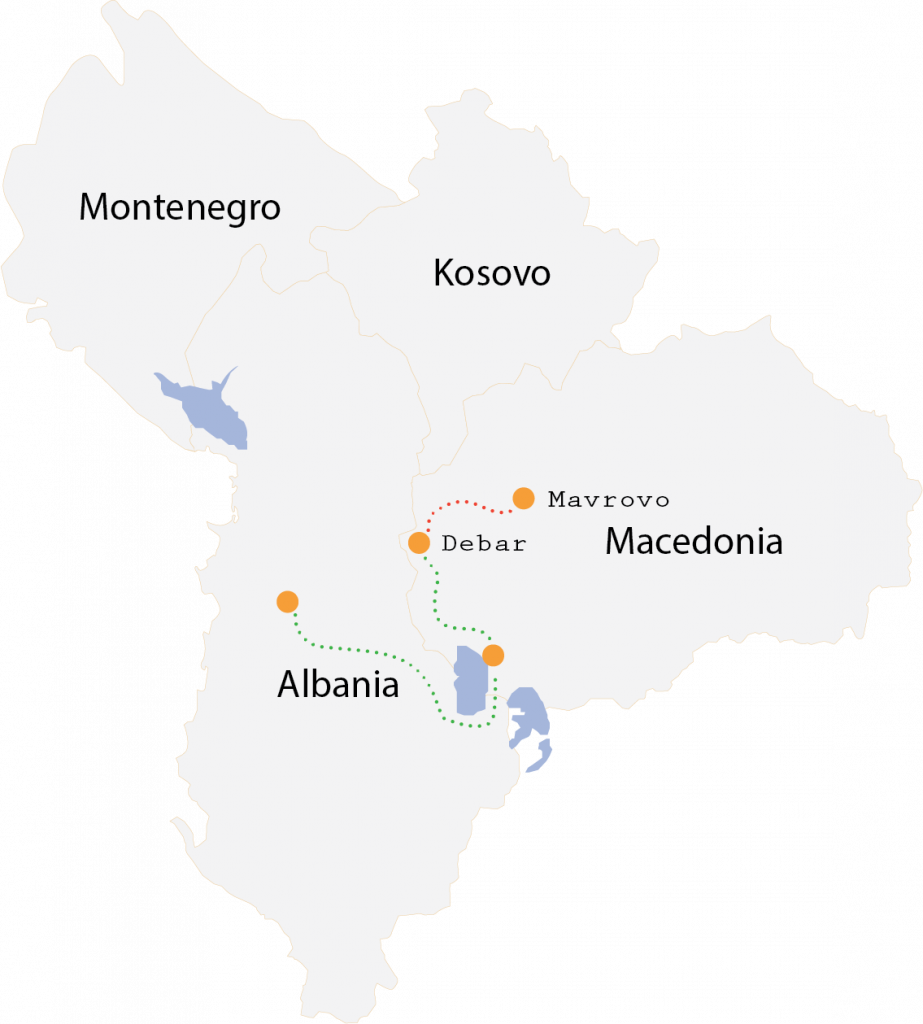
Debar-Mavrovo
DAY 4
Today’s ride is just glorious. Through gorges, pine forests, karst fields and waterfalls of Mavrovo National Park offer a breath of fresh, rarefied air. Beautiful vistas abound, and the park is home to North Macedonia’s and Albania’s highest peak, Mt Korab (2764m) where both countries devide.
Mavrovo-Prizren
DAY 5
After an early breakfast we will transfer for one and a half hour to the border with Kosovo. From there, after coffee and tea, we’ll cycle up and down the wild Sharr Mountain, one of the most picturesque parts of Kosovo and for years a popular skiing destination in the former Yugoslavia. Undulating roads, moorland mountains offer fabulous views, all the way down to picturesque Prizren, with its charming mosque- and church-filled old town, shining with an enthusiasm that’s infectious. It’s Kosovo’s second city and most obvious tourist town and is well worth our afternoon lingering exploration. Prizren a UNESCO city and is also known for Dokufest, a documentary film festival held each August that attracts documentary makers and fans from all over the world.
Distance: 69km | Total Climb: 1007m


Prizren-Pejë
DAY 6
We take a day break from cycling and continuing by bus to Peja, Kosovo’s third-largest city and one flanked by sites sacred to Orthodox Serbians and with a Turkish-style bazaar at its heart. We will visit the two UNESCO sites just before lunch and continuing up the spectacular nearby Rugova Valley and surrounding mountains for a relaxing afternoon.
Peja Patriarchy, a UNESCO World Heritage site, is a complex of churches located in the suburbs of Pejë, near the Lumbardh River, at the entrance of Rugova Gorge. This complex dates from the XIII century and is the site where the Serb episcopate and patriarchs resided. From its inception, the Patriarchy was a gathering place for theologians, writers and artists alike—a place where artistic heritage was greatly stressed and, today, remains one of core monuments to Kosovo’s cultural heritage.
Pejë-Berane
DAY 7
After breakfast we will make our way down the Rrugova national part toward the remote border with Montenegro. This mountain boarder was only open recently for tourism purposes and makes a grate addition to the development of hiking and cycling for the region, where previously saw little to no tourism at all. A beautiful climb inside an ancient forest followed by an even more spectacular descent with views of the Plava valley dotted with caustic lakes.
Distance: 57km | Total Climb: 1037m

Berane-Kolasin
DAY 8
We leave Berane via a narrow, winding road that ascends steadily through the Komovi Mountains to reach the Trešnjevik Pass (1,565m) and a welcome bar for refreshments. From the pass, the narrow road descends into the valley of the Tara River before crossing the Drcka River and joining a wider, more modern road that runs alongside the Tara River into the town of Kolašin situated beneath the Bjelasica and Sinjajevina mountains.
Distance: 45km | Total Climb: 897m
Kolasin-Zabljak
DAY 9
We leave Kolašin by cycling alongside the Tara River, Montenegro’s second longest at 146km. The river valley begins to narrow as we enter the lower reaches of the Tara River Canyon. At 78km long, this is the longest river canyon in Europe. We have lunch overlooking the Tara Bridge which stretches across the canyon 165m above the river. The next 10km is uphill as we leave the Tara River and enter the Durmitor National Park, before reaching the remote collection of A-frame ski chalets offering open views of the surrounding mountains. Once in Žabljak, you’ll be free to explore this amazing winter ski resort or go for a short bike ride around the mystic waters of the The Black Lake.
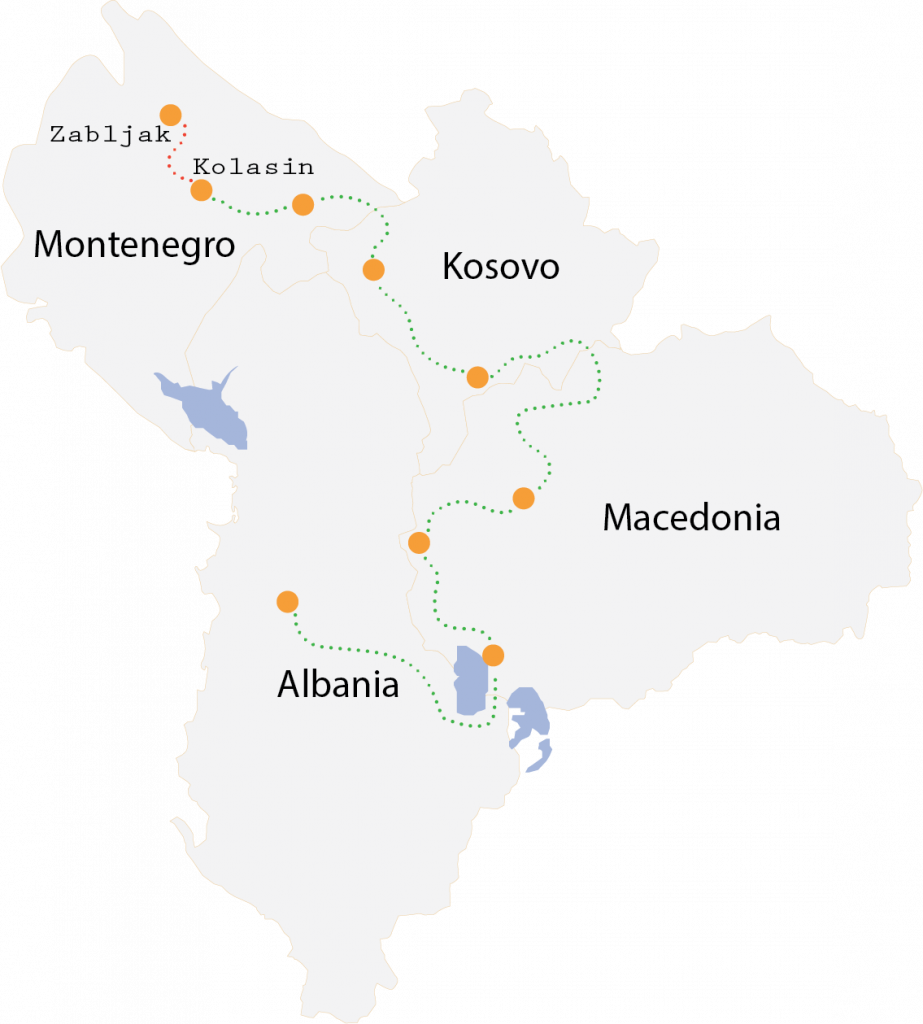

Zabljak-Pluzine
DAY 10
Today’s ride takes us through the Durmitor National Park and begins with a dramatic and remote 8km ascent to the Prevoj Sedlo Pass (1,907m) along the highest paved road in Montenegro. From the pass, the narrow road winds its way down through the mountains before a second ascent to the Prijespa Pass (1,885m). Our descent continues through magnificent limestone scenery and alpine meadows. Leaving the National Park we descend through hairpin bends and rocky tunnels to the shore of Lake Plužine and the town of Plužine.
Distance: 55km | Total Climb: 900m
Pluzine-Cetinje
DAY 11
From Pluzine we undulate along the main road above the Komamica River heading south toward Nikšić. After lunch there, we will prepare the bikes and transfer by mini van to the Ostrog Monastery, before continuing to Cetinje, the Old Royal Capital city of Montenegro where we will experience the authentic atmosphere of the town by walking through the historical center and chilling at one of many centuries-old open-air terraces.
Ostrog Monastery with its gleaming white facade resting miraculously in a cliff face 900m above the Zeta valley, is the most important site in Montenegro for Orthodox Christians. Dubbed St Basil’s miracle, no one seems to understand how it was built. Constructed in 1665 within two large caves, it gives the impression that it has grown out of the very rock.

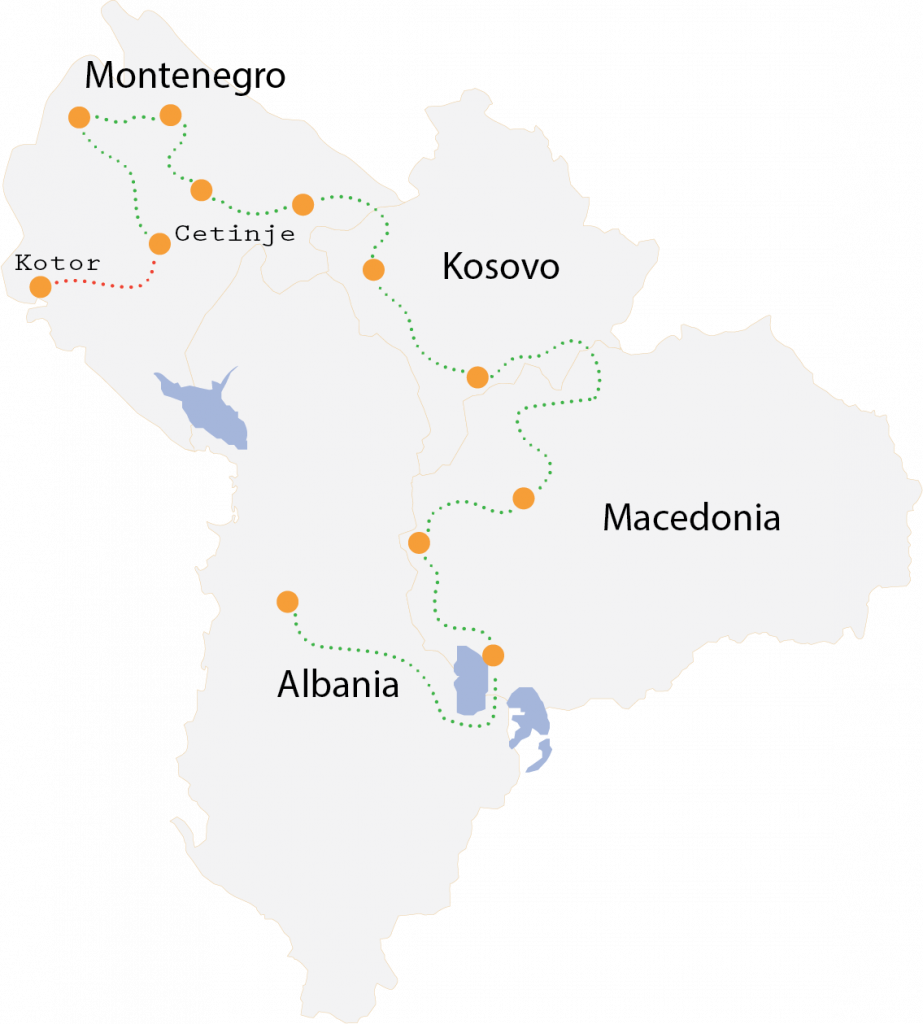
Cetinje-Kotor
DAY 12
Today is one of contrasts as we travel from the highlands down to the Adriatic Coast. We initially head west, gradually ascending, to Lovcen national park, where there also the mausoleum of Montenegrin ruler and poet Petar II Petrovic Njegos. The road then passes through a dry, rocky landscape before reaching our lunch stop at a roadside restaurant in the town of Njegusi. The rest of the day is spent pretty much going downhill. This narrow road descends through a series of hairpin bends with dramatic views of the inlet of Boka Kotorska some 650m below. After reaching Kotor we cycle alongside the shoreline of the Boka Kotorska, or ‘The Bay of Kotor’, to reach Dobrota on the outskirts of Kotor
Distance: 47km | Total Climb: 650m
Rest day Kotor
DAY 13
Free day to explore the medieval city of Kotor. Built in the 15th century, the city is still completely encircled by walls with three entrance gates to the west, north and south. The city is overlooked by Mt Lovčen and contains several squares, a cathedral, several churches and a patchwork of narrow streets. Other options include a boat trip or hiring a canoe on the Boka Kotorska. For those that fancy cycling, a circuit of the Boka Kotorska is recommended. It involves a 10 minute ferry journey to cross the sea inlet on the western side and offers magnificent views of Kotor and the various towns and villages along the shoreline with the surrounding high mountains as a backdrop.
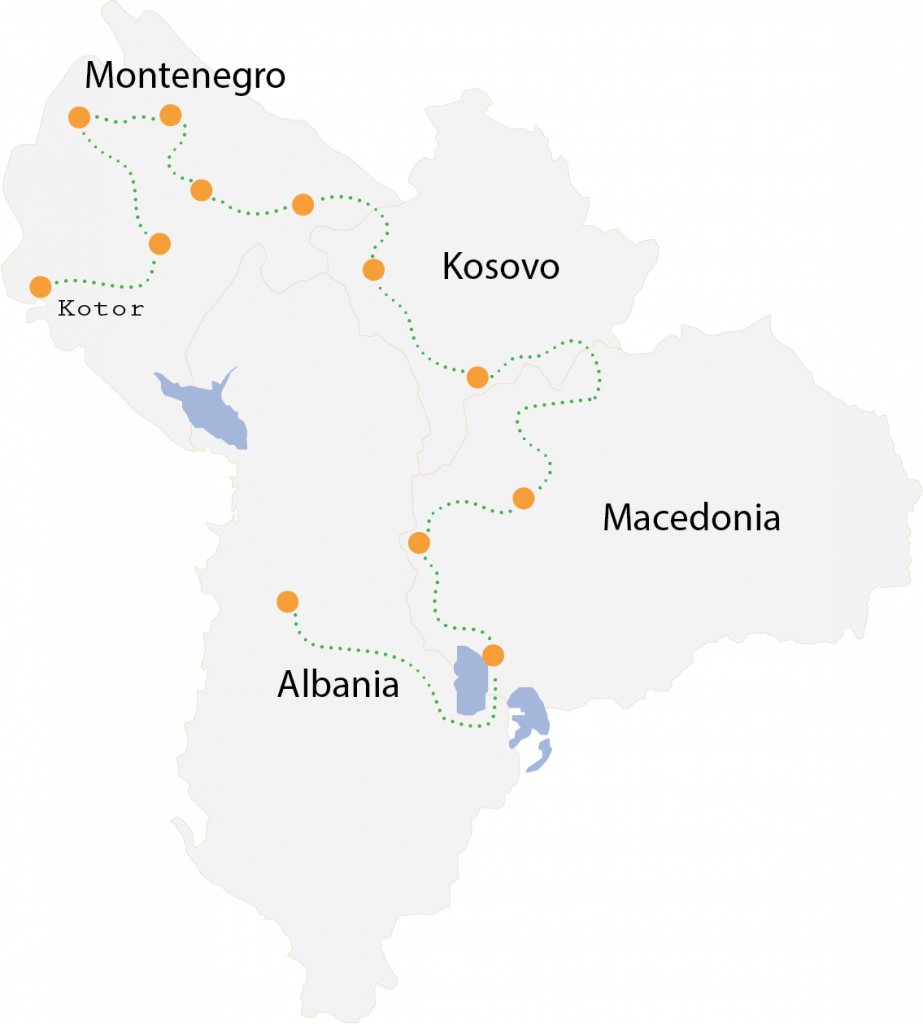

Kotor-Shkoder
DAY 14
Our final day of cycling takes us alongside the western shore of Lake Skadar which straddles the border between Montenegro and Albania. For most of the day we have wide open views across the lake’s blue waters. The road is a bit of a “roller coaster” with three significant ascents and descents. Near the southern end of the lake our final ascent takes us to the Štegvaš Pass (490m) with its fine viewpoint across the lake and into Albania. A long descent brings us down to the flat plain and the main road and just a few km later we cross the border back into Albania. The final 15km within Albania is almost flat and after crossing the River Buna we enter the city of Shkodër, the largest city in Northern Albania.
Distance: 50km | Total Climb: 610m
Departure
DAY 15
Farewell day. Depending on your flight, right after breakfast we will transfer for one and a half hours to Rinas airport in Tirana. A separate transfer will be offered to those staying another night in Tirana or continuing on other adventures.